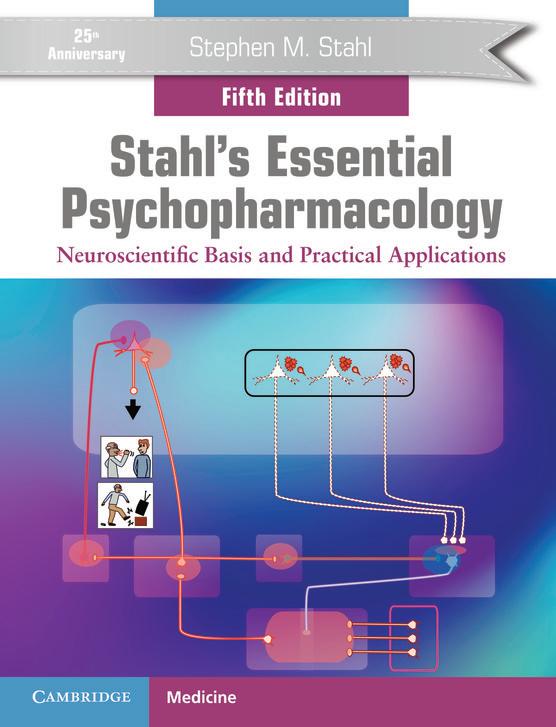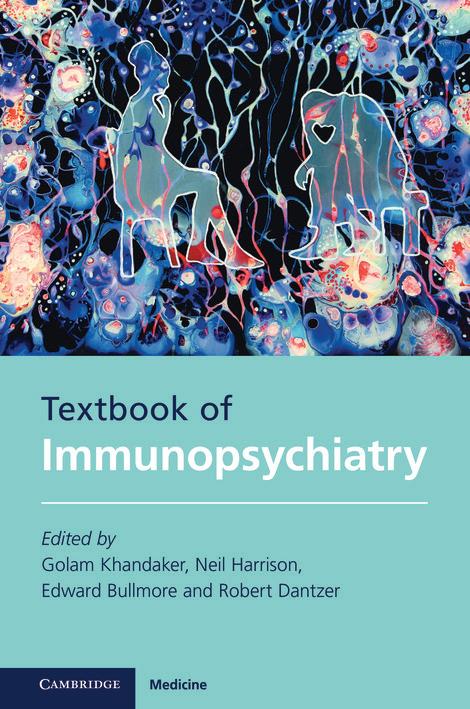
6 minute read
Medicine
Brain Fables
The Hidden History of Neurodegenerative Diseases and a Blueprint to Conquer Them
Alberto Espay
University of Cincinnati Benjamin Stecher
Educational Consultant and Healthcare Advocate
Description
An estimated 80 million people live with a neurodegenerative disease. That number is expected to increase rapidly as populations age, lifespans increase, and exposure to toxins rises. Despite decades of research and billions in funding, there are no medications that can slow, much less stop, the progress of these diseases. This is because diseases such as Parkinson’s and Alzheimer’s do not exist in biology. Yet, hundreds of clinical trials around the world are examining the potential of single therapies in thousands of people sharing one of these labels. Compounding the problem, these therapies were developed on evidence from models that do not come close to capturing the complexity of these diseases in the affected humans. These practices must end. Brain Fables is a call to refocus on understanding living and aging to create the personalized treatments each affected individual desperately needs.
Key Features
• The combined narrative of an acclaimed neurodegenerative disease researcher and an expert patient advocate ensures this neverbefore-told important story appeals to both professional and lay audiences with an interest in brain health • Lived-experience commentary from a patient living with Parkinson’s provides an insight into the uncertainty and lack of information after a diagnosis, and offers reassurance to other patients about what lies ahead • A wakeup call to the scientific community and society, the authors present evidence-based arguments on how and why we must reimagine and treat neurodegenerative diseases in a convincing and engaging narrative
Contents
Preface; Acknowledgements; 1. The shaky six and the ‘second reality’; 2. Pieces of a puzzle?; 3. Disease ‘redefinition’: a tough pill to swallow; 4. Disease subtypes: the promise and the fallacy; 5. Protein paradox; 6. The fault in our models; 7. Biomarkers: the promise and the fallacy; 8. Lessons from oncology; 9. Symptomatic vs. disease-modifying therapies; 10. The hypothesis that refuses to die; 11. Our living dissonance; 12. The scientific and lay narratives; 13. Challenges viewed from afar; 14. The moonshot: population-based studies of aging; 15. Predictions for the 2020s and beyond; Epilogue. ‘When will we have a cure for Parkinson’s disease?’; Note added at press time; References; Index.
Additional Information
Level: General readers, medical specialists/consultants
July 2020 234 x 156 mm 174pp 35 b/w illus. 7 tables 978-1-108-74462-1 Paperback £14.99 / US$19.95
Stahl’s Essential Psychopharmacology
Neuroscientifi c Basis and Practical Applications Fifth edition
Stephen M. Stahl
University of California, San Diego
Description
Long established as the preeminent source in its fi eld, the eagerly anticipated fi fth edition of Dr Stahl’s essential textbook of psychopharmacology is here! With its use of icons and fi gures that form Dr Stahl’s unique ‘visual language’, the book is the single most readable source of information on disease and drug mechanisms for all students and mental health professionals seeking to understand and utilize current therapeutics, and to anticipate the future for novel medications. Every aspect of the book has been updated, with the clarity of explanation that only Dr Stahl can bring. The new edition includes over 500 new or refreshed fi gures, an intuitive color scheme, fourteen new uses for older drugs and eighteen brand new drugs, coverage of Parkinson’s Disease Psychosis, behavioural symptoms of dementia, and mixed features in major depressive episodes, and expanded information on the medical uses of cannabis and hallucinogen assisted psychotherapy.

Key Features
• Thoroughly updated and extensively revised for the fi fth edition, taking account of developments in the fi eld • Evidence-based principles for the use of psychopharmacologic drugs are clearly explained and developed • Features the author’s highly-praised writing style with clear, easy-to-follow illustrations • Highly illustrated throughout with over 500 brand new or refreshed eye-catching, clear, color diagrams • Carefully selected ‘suggested reading’ directs the reader to the most relevant sources for further information on a particular topic • All chapters have been restructured to refl ect Neuroscience based Nomenclature, that is, drugs named for their mechanism of action rather than use • Indispensable for all students and professionals in mental health
Contents
Preface to the Fifth Edition; CME Information; 1. Chemical Neurotransmission; 2. Transporters, Receptors and Enzymes as Targets of Psychopharmacological Drug Action; 3. Ion Channels as Targets of Psychopharmacological Drug Action; 4. Psychosis, Schizophrenia and the Neurotransmitter Networks Dopamine, Serotonin and Glutamate; 5. Targeting Dopamine and Serotonin Receptors for Psychosis, Mood and Beyond: So-Called ‘Antipsychotics’; 6. Mood Disorders and the Neurotransmitter Networks Norepinephrine and Gamma Amino Butyric Acid (Gaba); 7. Treatments for Mood Disorders: So-Called ‘Antidepressants’ and ‘Mood Stabilizers’; 8. Anxiety, Trauma and Treatment; 9. Chronic Pain and its Treatment; 10. Disorders of Sleep and Wakefulness and their Treatment: Neurotransmitter Networks for Histamine and Orexin; 11. Attention Defi cit Hyperactivity Disorder and its Treatment; 12. Dementia: Causes, Symptomatic Treatments and the Neurotransmitter Network Acetylcholine; 13. Impulsivity, Compulsivity and Addiction; Suggested Reading and Selected References; Index.
Additional Information
Level: Specialist medical trainees, medical specialists/consultants, graduate students Specialist medical trainees, medical specialists/consultants, graduate students
July 2021 246 x 189 mm 644pp 978-1-108-97163-8 Paperback £74.99 / US$99.99
Greek, Italian, Spanish, Portuguese (Brazil) and Turkish rights sold. Previous editions sold in Croatian, French, Greek, Italian, Japanese, Romanian, Russian, Portuguese (Brazil), Spanish and Turkish.

Textbook of Immunopsychiatry
Golam Khandaker
University of Cambridge
Neil Harrison
Cardiff University Brain Research Imaging Centre (CUBRIC)
Edward Bullmore
University of Cambridge Robert Dantzer
MD Anderson Cancer Centre
Description
The rapidly growing field of immunopsychiatry combines expertise and insights from immunology, psychiatry and neuroscience to understand the role of inflammation and other immune processes in causing and treating mental illness. This represents a major shift in mental health science, traditionally focused on psychological and neuronal mechanisms of depression, psychosis and dementia. This book provides the first comprehensive overview of recent, inter-disciplinary research linking disordered function of the immune system to the brain and mental illness. It offers a broad and deep perspective on the implications of immune system involvement in psychiatric disorders, including a balanced focus on basic science and clinical applications. Chapters cover the scientific evidence linking immune processes to major mental illnesses such as schizophrenia, depression, anxiety and dementia. An invaluable guide for graduate students, doctors in training, scientific researchers and others interested in the link between the immune system and mental health.

Key Features
• Provides a comprehensive overview of recent research linking disordered function of the immune system to various mental illness, giving a well-informed and accessible perspective on this rapidly growing, inter-disciplinary field • Offers a balanced focus on basic science and clinical research, valuable to both researchers and clinicians across psychiatry, neuroscience and immunology • Includes recent developments regarding potential usefulness of immunotherapies for major psychiatric disorders, highlighting the clinical relevance and translational potential of new insights into how the brain and the immune system can interact to cause mental health disorders
Contents
Preface; 1. Basic concepts in immunobiology; 2. From psychoneuroimmunology to immunopsychiatry: an historical perspective; 3. Stress, immune system and brain; 4. The role of prenatal and childhood infection and inflammation in Schizophrenia; 5. The role of autoimmune encephalitis in immunopsychiatry and lessons from neuropsychiatric systemic lupus erythematosus; 6. Effectiveness of immunotherapies for psychotic disorders; 7. Inflammation, sickness behaviour and depression; 8. Immunotherapies for depression; 9. The effect of systemic inflammation on cognitive function and neurodegenerative disease; 10. Role of inflammation in Lewy body dementia; 11. The role of adaptive and innate immunity in alzheimer’s disease; 12. The immune system and anxiety disorders; 13. Microbiome-gut-brain interactions in neurodevelopmental disorders: focus on autism and schizophrenia; 14. Depression and the adaptive immune system; 15. Transdiagnostic features of the immune system in major depressive disorder, bipolar disorder and schizophrenia.
Additional Information
Level: Medical Specialists/Consultants, academic researchers, professionals
September 2021 234 x 156 mm c.360pp 978-1-108-42404-2 Hardback £49.99 / US$64.99










